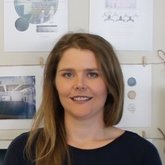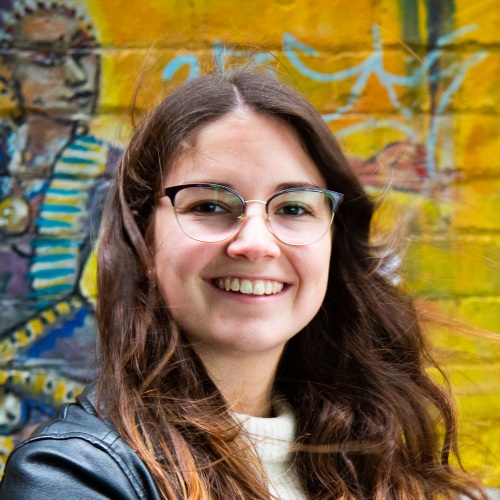
Master of Interior Architecture – MIA
Build your expertise and improve your career prospects with advanced study of interior architecture.
The people you work with and learn from are an important part of your studies. Learn who the teaching staff are and hear what the programme is like.
Academic staff
- Daniele Abreu e LimaDaniele Abreu e Lima—Modernism and national identity, modernism in peripheral countries, the modern house, cinema and architecture, interior design, thermal and lighting comfort
- Daniel BrownDaniel Brown—Storm and flood proofing urban communities, sustainability and resilience, narrative architecture and cultural practices, architecture of Southeast Asia and the Pacific Rim
- Philippe CampaysPhilippe Campays—Architecture of the liminal—spaces of haunting and of death, architecture of the sacred—Vastu Shastra, somatic space, sustainable development
- Sam KebbellSam Kebbell—Identity and values of creative communities, habitats for creative people, how communities define themselves through their aesthetic, environmental and social decisions
- Christina MackayChristina Mackay—Sun-shading for UVR protection and skin cancer prevention, past and future interior joinery systems, re-generation of New Zealand heritage housing
- Christine McCarthyChristine McCarthy—Architectural representation—drawing as a medium for theoretical analysis, film and architecture, New Zealand architectural history, interior architecture theory—defining interiority, interior archaeology
- Joanna Merwood-SalisburyJoanna Merwood-Salisbury—Architectural history in the 19th and 20th centuries, architectural theory, history and theory of interior architecture and design, public space, history of urbanism
- Maibritt Pedersen ZariMaibritt Pedersen Zari—Sustainable architecture, biomimicry, wellbeing, regenerative development, climate change, biophilic design
- Antony PelosiAntony Pelosi—Architectural design tools, housing, learning spaces, workplace design, innovative construction, and systems thinking
- Emina PetrovicEmina Petrovic—Sustainable building materials, toxicity of building materials, ethical and ecological building materials, perception of sustainability in architecture, applications of digital technologies to achieve sustainability, history of interdisciplinarity in architecture
- Natasha PerkinsNatasha Perkins—Furniture design, intergenerational triggers, techno craft and materials and processes, acoustic treatment forms and products for interior spaces, creative design investigation in product development, design initiatives to support craftspeople in developing nations
- Shenuka de SylvaShenuka de Sylva—post-disaster reconstruction in rural and coastal environments, development of coastal architecture in the Asia-Pacific region, indigenous culture in contemporary public architecture, conservation of living colonial fortifications, modernist and regionalist women architects of Asia.
Stories

Alanah McCormick
Master of Interior Architecture student
I enjoyed working on group projects, as part of a team, exploring design collaboration.
Creating vibrant spaces
Alanah is in her fifth year of study with the Wellington School of Architecture. Her interest in Interior Architecture has grown over this time. Interior Architecture looks at creating vibrant spaces using innovative design approaches.
Exploring culture and space
Alanah is particularly interested in how design is reflective of cultural identities and heritage and how these affect people’s experience in a space. Her favourite courses have been about design integration. “I enjoyed working on group projects, as part of a team, exploring design collaboration.”
Incorporating interests
Alanah credits the programme for its flexibility, allowing her to include her interests in her study. “I explored the role of wool in interior design for one of my papers.”
And now, completing her Master’s degree, her thesis looks at rural community halls and the role of interior design as a way of retaining local identity.
Drawing parallels
“My thesis stems from my rural upbringing—I have always been interested in drawing parallels between rural life and interior architecture.” When Alanah completes her Master’s degree, she plans to travel before embarking on a career using the skills she has learnt as an Interior Architecture student.

Mariana Restrepo Sierra
Master of Interior Architecture
When planning my studies I started looking into interior design and found the Interior Architecture programme at Te Herenga Waka—Victoria. I was hooked the second I started reading about it and I loved Wellington as a city so it was the perfect fit.
From undergraduate to postgraduate
A love of the Sims computer game from an early age led to Mariana Restrepo Sierra’s passion for interiors and architecture. That passion saw her complete her Bachelor of Architectural Studies, majoring in Interior Architecture, at Te Herenga Waka—Victoria University of Wellington, and she’s now studying for her Master of Interior Architecture.
Mariana’s Master’s thesis looks at how to use street art as the design driver for high-density housing built within existing public buildings.
Architectural responses to artistic expression
“I am essentially looking at an architectural response to an artistic expression, and how it can be translated and inform the interior architecture of high-density housing,” says Mariana.
“I am basing my research in my home city—Medellin, Colombia—so it is very personal and I feel very passionate about the project. I have selected street art created by a particular community that has been through many hardships and use their street art as a way to express their painful memories and stories. There is a richness of culture in this community that is undeniable, and the art itself is quite beautiful. It is then exciting to consider how architecture can enable and interpret this art through materials and form.”
Encouraging supervisor
Mariana particularly enjoyed working with her supervisor, Philippe Campays. “Philippe is like a breath of fresh air! He is so understanding and encouraging, while also being very good at challenging ideas and pushing me to think further and more in depth. He is invested in what I am doing and seems genuinely excited about my work and ideas.
Rewarding experience
“My time at the Wellington School of Architecture has been one of the most rewarding experiences of my life. It is really cool to be able to look back at past projects and see the growth and development of my work. This is such a supportive and creative programme to be involved in.”
Taylor Greer
Master of Interior Architecture
I hope that my research will assist designers in creating culturally and contextually rich, unorthodox, functional, and atmospheric designs.
Challenging the design environment
Taylor’s Master’s research investigates the use of Deconstructivism as an instrumental and operational method to explore the design capabilities of an interior.
“My thesis will present an interior architectural design for a series of retail stores located in Wellington, New Zealand. Each interior will have a specific design based upon deconstructed components of its identity,” says Taylor.
“Underlying my research is the assertion that interior architecture should be in constant flux to reveal meaningful, innovative, and unique designs. I would like to challenge our design environment to arrive at new solutions regarding how we use, interpret, and experience interior space. As well as incorporating contextual and cultural narratives into design outcomes.
“I hope that my thesis will help to establish the role of Deconstructivism within interior architecture, and further our understanding of our relationship with the built environment.”
Independence and freedom
For Taylor, the self-directed nature of the Master’s has been invaluable.
“It gives me a stronger sense of artistic and professional independence because there are minimal restrictions.”
Expert supervision
Taylor’s supervisors, Robin Skinner and Geoff Thomas have been a highlight of her Master’s experience.
“They are great at facilitating the growth and further exploration of my ideas. They encourage me to develop the necessary efficiency, diligence, and communication for my research. I look forward to meeting with my supervisors each week because I leave feeling motivated and inspired. I am very lucky to have the opportunity to work with such experts and lovely people.”
For a fourth-year paper about professional practice, Taylor and a few of her fellow students interviewed Nspire Design, an Architecture firm in Wellington, about their business. Many months later Nspire Design offered Taylor a job as an Architectural Graduate.
Going global
“I aspire to work as an Interior Architect overseas. I would love for my projects to be recognised as creative and unorthodox, with a rich architectural language of raw materials, bold form, and careful detailing.”
Previous
RequirementsNext
How to apply

